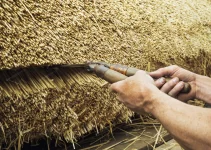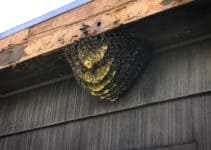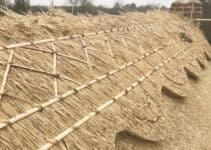A thatched roof is a traditional type of roofing material that has been used for centuries. It is typically made from straw, reeds, or grass, and is known for its durability and longevity.
But what happens when moss starts to grow on a thatched roof? While it may not seem like a big deal at first, moss can cause serious damage to a thatched roof if it is not removed promptly.
The moss roots can penetrate the thatch, causing a smell and leading to rot and eventually causing the roof to collapse. In addition, moss retains moisture, speeding up the decomposition process. It is essential to remove any moss that you see growing on your thatched roof for these reasons.
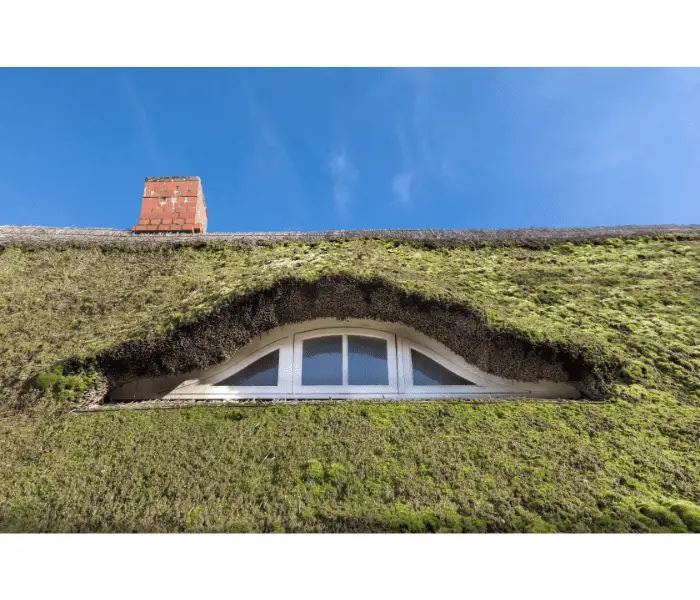
Is Moss On A Thatched Roof A Problem?
Yes, moss on a thatched roof is a problem. Not only does moss make your roof look untidy and uncared for, but if left untreated, it can eventually cause damage to the thatch. Moss is also very slippery when wet, making it dangerous for anyone walking or working on your roof.
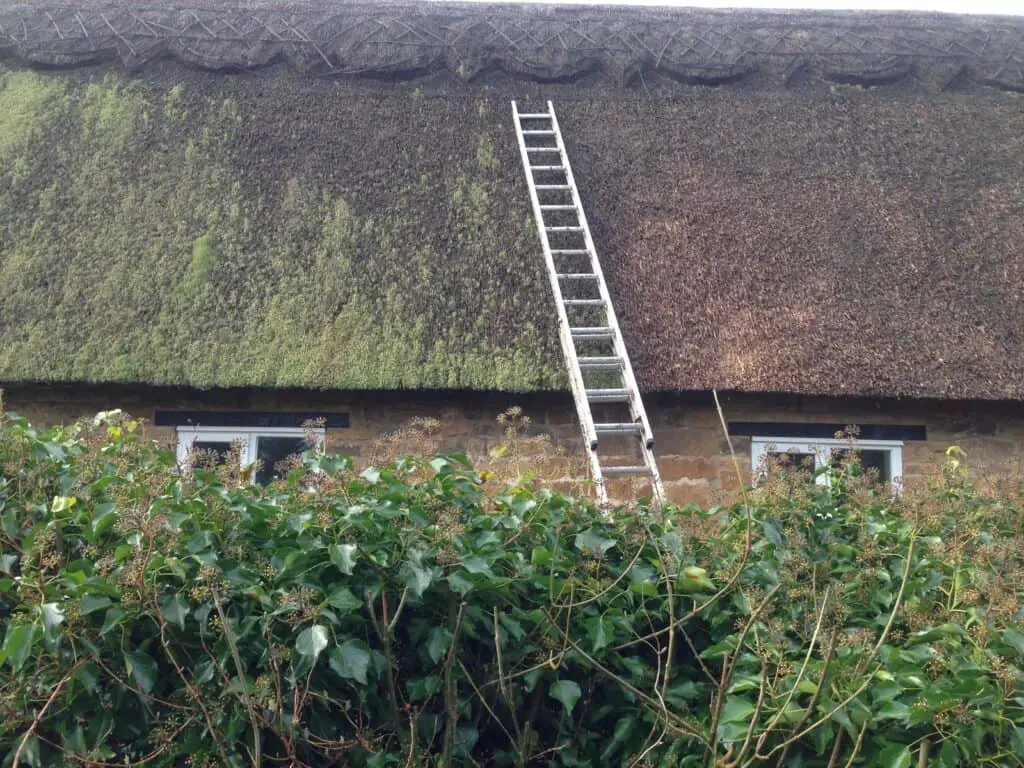
As well as making your roof look unsightly, moss can hold large amounts of moisture in the thatch and weigh down the roof. This can result in rainwater being unable to run off the roof properly and instead seep into the thatch, causing leaks and damp patches in the rooms beneath.
The extra weight of moss on your roof can also cause movement in the structure of your home, which can damage ceilings and walls over time.
Mosses consist of tiny plants without roots, although they do have stems and leaves; they absorb moisture from their surroundings when dry but can absorb nutrients directly from the surface of the substrate if their stems are wetted (for example, by rain ).
Moss growth tends to be worse in shady areas or on north-facing roofs with little direct sunlight.
If rainfall is heavy enough, even sunny areas can experience problems with moss because the rainwater stays against the thatch and roof tiles long enough to wet the surface of the substrate and allow moss to grow.
The best way to deal with moss on a thatched roof is to remove it as soon as you spot it. This can be a difficult task, but there are a few ways that you can go about doing it.
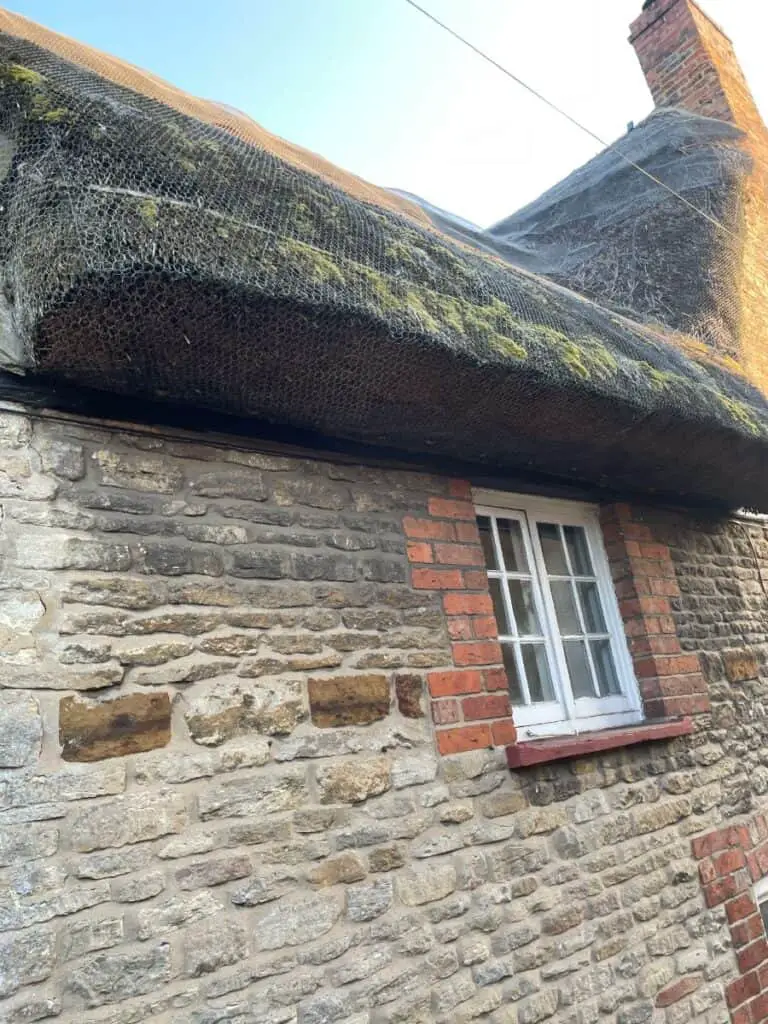
How Do You Remove Moss From A Thatched Roof?
Moss removal from a thatched roof is essential if you are to avoid an expensive repair job in the future.
There are several ways to remove moss from a thatched roof:
Chemical Treatment
You can get moss killers like this one which will kill the moss on your rooftop. This is a quick fix but needs to be applied regularly as new moss growth appears. The chemicals can be expensive and are best used on small areas of moss only.
Moss Scraping
Another option is to manually scrape off the moss, although this can damage the thatch and may require re-levelling and re-ridging afterwards. You will also need to remove any dead material left behind or it could cause damp spots on the thatch. If you do choose this method make sure you use a specialised brush like this one:
This method is very labour intensive and best avoided if possible.
Pressure Washing
Pressure washing works well on large areas of moss but ensure you don’t use too much pressure or you could damage the thatch.
As with chemical thatch roof treatment, any dead moss will have to be removed afterwards otherwise it could cause damp spots in the thatch when it starts to rot.
Moss Killer For Thatched Roofs
The best way to deal with moss is to kill it before it becomes a serious problem. Moss killers come in many forms but they all kill the moss by drying it out. The moss killer must be applied to the roof in a timely manner so that the moss does not have a chance to grow back.
Moss killers can be purchased online. Be sure to read the instructions carefully and apply as directed. It is also a good idea to test the moss killer on a small, inconspicuous area of the roof to be sure that it will not damage the thatch. This is my go to for moss killer:
Do Thatched Roofs Get Moldy?
Though they might look similar its important to understand the difference between moss and mould- moss is a rootless plant, whereas mould is a fungus, a distant relative of the mushroom. Moss needs sunlight to exist and grow, mould doesn’t.
Moulds are microscopic fungi, they are made of numerous cells and they have branches and roots that are like very thin threads. When you see mould growing you are seeing a ‘colony’. A colony is a single organism that grows in long branching cells called hyphae.
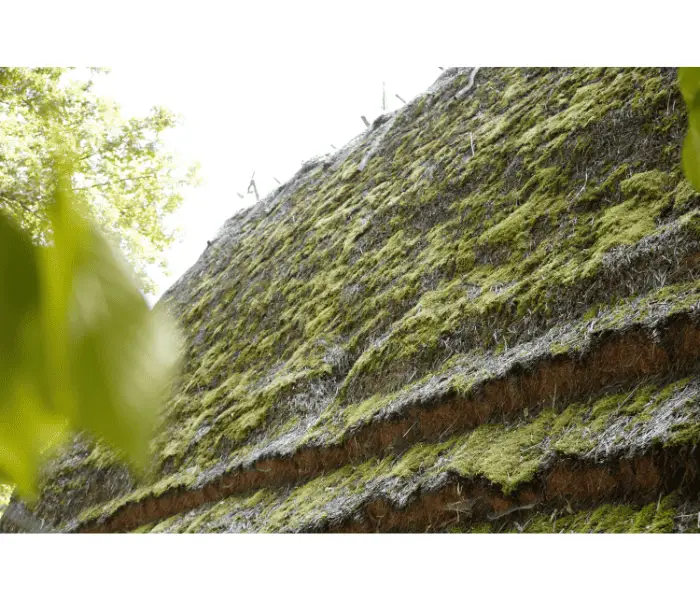
Do Thatch Roofs Mold?
If your roof is looking moldy, it is most likely that your thatch has either moss or lichen growing on it, rather than mould. Lichen is classed as a fungus and is often grey or white in colour. Lichen are likely to live on the algae on the thatch.
Lichen is not a single organism but a stable interdependent association between a fungus and algae and/or cyanobacteria. – Fun Fact – it is estimated that 6–8% of Earth’s land surface is covered by lichens.
Thatched roofs are typically made of water reed, long straw and combed wheat reed, sedge is also used for the ridges. If the thatch has been done well and to a high standard, it should resist mould/moss but due to the wet climate in the UK, these can become a problem and can require attention from specialists.
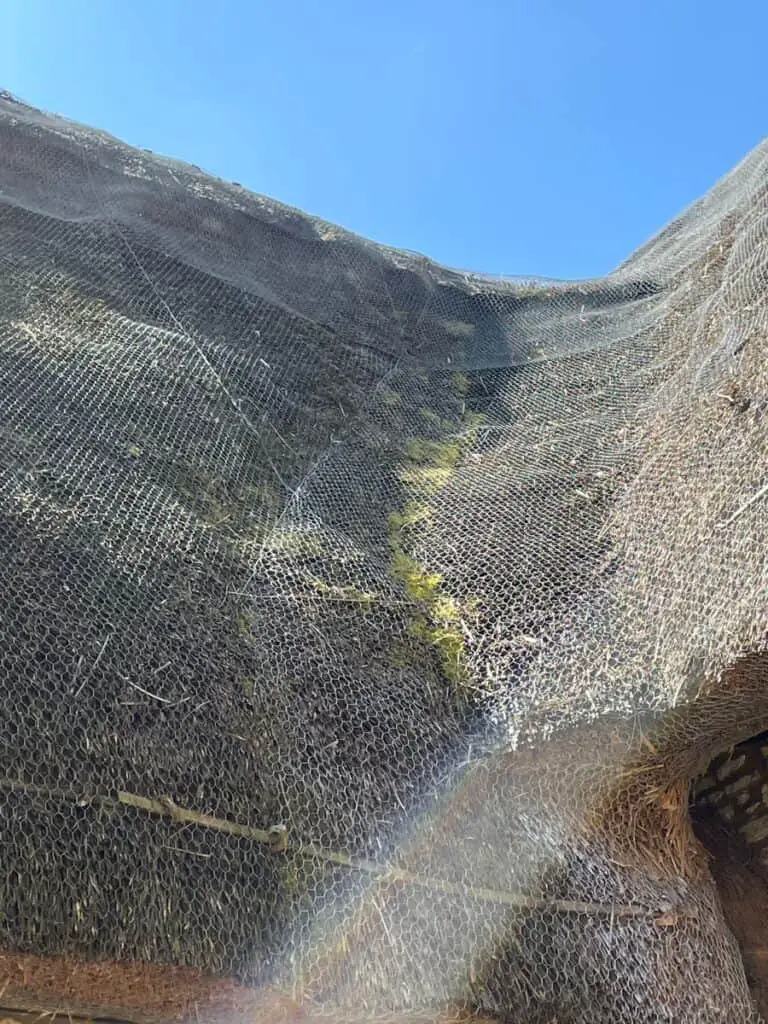
Prolonged periods of wet weather promote growth on thatched roofs, especially in dark areas, for example areas that have tree cover. Damp, shaded areas are ideal climates for moss and mould to grow in.
Furthermore, a roof covered in moss/mould will hold water and will stop a thatch from drying out properly thus creating an ideal environment for even more moss/mould to grow and damaging the thatch underneath in the process. Moss holds moisture and can stop the roof from ‘breathing’.
For the most part, the main issue with moss is that is makes the thatch looks less attractive, and it can attract birds to the thatch. Birds may then pick at the moss and the thatch, as they look to secure materials to make their nests; moss is great for lining bird nests!
Moss is also a great breeding ground for insects that birds feed on. Moss and lichen will likely change the colour of the thatch and could impact the longevity of the thatch.
Moss on Thatched Roof – A Summary
Thatched roofs can be a nightmare if they are not well-maintained. One of the most common problems that can occur is moss growth. Moss is not only unsightly but can also cause serious damage to a thatched roof if it is not removed in a timely manner.
Moss on a thatched roof should be removed as soon as possible to avoid damage to the roof and the structure of your home.
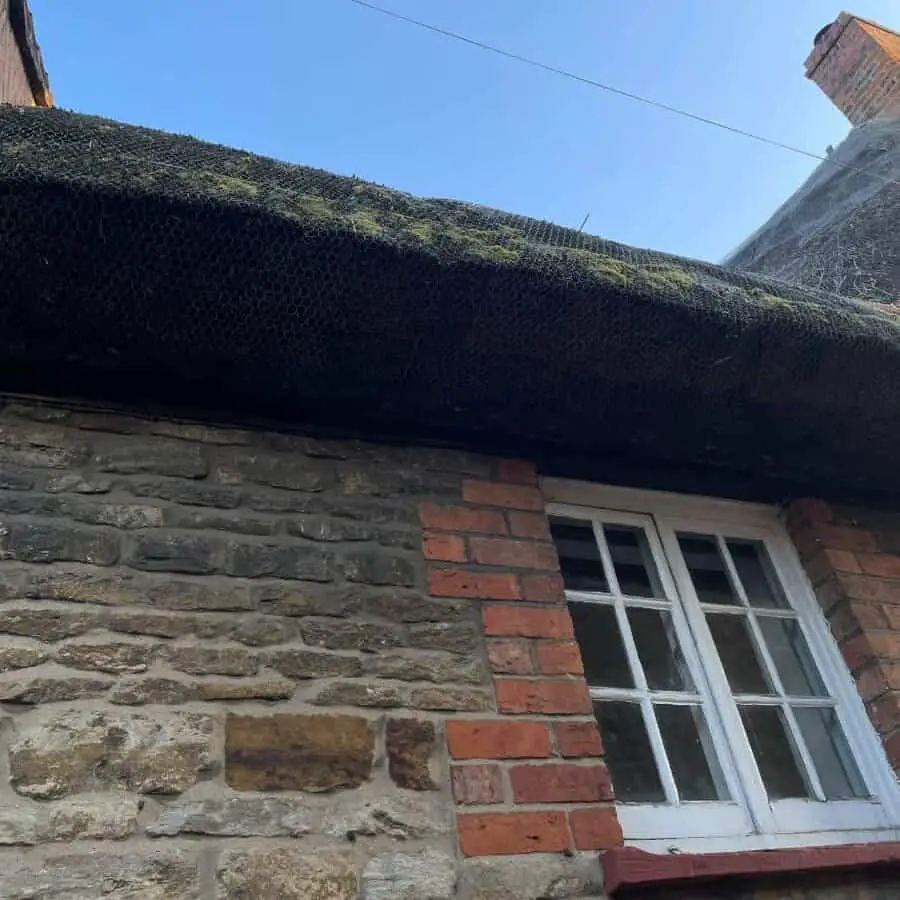
You can eliminate the moss by scraping it off, using a moss killer, or pressure washing. However, exercise caution when using any of these methods, as they can damage the roof if not used correctly.


